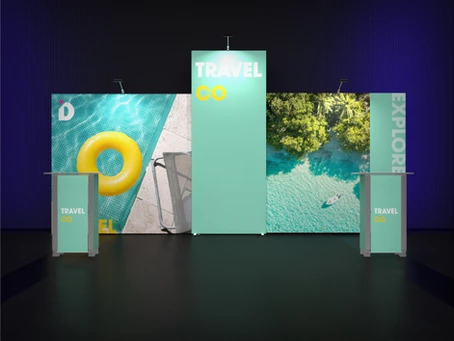
Trade shows and exhibitions offer excellent opportunities for your business by drawing large crowds of potential customers who are ready to make purchasing decisions. However, these events also attract competitors who are looking to capture the same audience. To stand out and achieve your goals, it is crucial to have a well-defined event marketing plan. This plan will serve as your strategic guide for reaching your objectives at the upcoming trade show or exhibition. Below is a concise checklist to help you organize your marketing efforts and attract visitors to your booth.
Before reserving your space at an event or exhibition, it’s crucial to define your goals and objectives. By establishing these objectives, you can create an action plan to achieve them and determine how you will measure your success. Accurate measurement will help you pinpoint areas for improvement as well as recognize your strengths. Additionally, this assessment will serve as a foundation for future trade show participation decisions and budget planning.
When setting your event marketing budgets, it is highly beneficial to review past financial data. Examine the events you previously attended, including your budget allocations and actual expenditures. This review will help you to:
Ensure that your Return on Investment (ROI) for each event is accurately assessed.
Reallocate unproductive costs to more effective areas.
Identify where you spent the most and develop strategies to either save money or enhance value and ROI.
Decide if there are events that should be removed from your schedule.
To boost your brand, choose the right exhibitions, trade shows, and conferences. Conduct thorough research in advance to find events that best match your company’s goals and target markets.
When booking your booth space, aim for high-traffic areas where attendees will frequently pass by. These prime locations are often in high demand, so as a first-time exhibitor, securing your spot early gives you the best chance of getting a good location.
After securing your booth space, the next step is to finalize your display stand. Collaborate with exhibition display specialists like Imagine Displays by sharing your objectives, budget, marketing strategies, and existing materials. Our website has many different display options so feel free to take a look through and contact us if you have any questions.
As you plan your event, make a list of people and organisations you are quite certain will want to attend. This will enable you to reach out to them before the event so that you can drum up some buzz and have invested interest from attendees before the show has even begun!
When you have generated your list of potential attendees, you should let them know how they can benefit if they visit your booth at the exhibition. The incentives that you offer can also form the basis of the brand advocacy by your potential attendees. The end result is that more visitors come to your booth.
If your booth is located in a high-traffic area and features an engaging display, attendees will be drawn to learn more about your company and its benefits. However, what will make a lasting impression is your booth staff. They must be professional, knowledgeable, and engaging in both appearance and approach. It’s crucial that they understand the show’s objectives and tailor their messaging and tactics accordingly. Your staff’s performance can significantly impact your trade show success, so choose them carefully.
Pre-show promotions are key to building excitement for your booth. Start by identifying potential attendees and targeting promotions based on the show’s location. Use marketing blasts, mailers, and updates on your website, blog, and social media to highlight your booth number and offers. Tag the event and use hashtags to maximize your reach and drive traffic to your booth.
Place orders for promotional materials and giveaways at least 2 months before the exhibition to avoid last-minute issues. Likewise, ensure that staff uniforms are prepared in advance to ensure your brand is well-represented at the event.
A few months before the event, you need to book your flights, shipping and accommodation. If you leave it too late, you may find that the rates have increased which has the potential to blow out your budget. If you are exhibiting internationally, it’s important to take these steps much earlier and make sure whoever is travelling has the appropriate documentation to do so (visas, passports etc).
When the show ends, the real sales process begins. Review and prioritize your leads using your lead management system, categorizing them as A, B, or C based on importance. Develop follow-up strategies for each category, but most importantly, make sure to follow up!
After following up, measure your success by comparing your results to your objectives. Assess what you achieved, identify areas for improvement, and use these insights to justify future participation and budget increases. Event marketing remains a top business strategy; a clear plan is crucial for its success.
We hope these 13 tips help you create an effective event marketing plan. Partnering with an experienced exhibition specialist can also help you achieve your goals with the right display solution.
Contact: Nathan@imaginedisplays.com.au
Website: www.imaginedisplays.com.au
Unit 1, 31 Harvey Street North
Eagle Farm QLD 4009